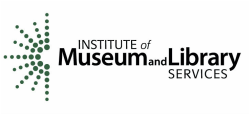Discovery Centers: Sound Explorations
Rulers and Other Flat Objects
Using different rulers in different positions what kinds of sound can you make?
What’s needed : Rulers of different sizes (wood, metal, plastic), large and small craft sticks
Hold a ruler flat on the table so a portion of it extends off the edge. Flick the overhanging part of the ruler and see/listen to the result. Does the sound change if the ruler is a different material?
A little at a time, slide more of the ruler off the edge while still firmly holding the ruler flat to the table. How does the sound change?
Questions/prompts:
What do you think is making the sound? What is the source? What is the action?
How might we make the sound higher or lower?
What is the difference in sound with different materials?
What else might we use?
Water and Vibrations
What different sounds can you make with water?
What’s needed: Pitchers of water, chopsticks, clear glass jar or glasses, plastic and glass bottles
Put some water in different containers and make sounds by blowing or hitting the container.
Questions/Prompts:
What different ways are there to make sounds?
What do you think is making the sound? What is the source? What is the action?
How might we make the sound higher or lower?
How are the sounds different when you blow and when you hit?
How might you make an instrument with 4 different containers?
Hanger (Metal Object) Activity
Cut two pieces of string (16-18 inches) and tie them onto a coat hanger, cake rack or large metal utensil. Wrap the loose ends of the string around your index fingers and place your fingers next to your ears. Gently swing the object away from your body and tap a hard surface like the edge of a table or back of a chair.
Questions/Prompts:
- What is making the sound? What is the source? What is the action?
- What differences do you hear with different objects?
- What about different string?
- What about different lengths of string?
Paper Cup Telephone
What’s needed: Paper cups (size) string, scissors, something to make hole in cup sand large paper clips.
Poke one hole in the bottom of two cups.
Cut a string at least 20 feet long and thread the ends into the cups.
Tie a paperclip to each end of the string (this anchors the string inside each cup without have to tie large knots). Do the same at the other end
Try out your telephone with a partner. Try it first with the string loose between you, then make the string taut. Is it any different?
Questions/Prompts:
Can you hear one another? If not, how can you fix it?
What do you think is happening?
What matters to make it work?
What changes do you think would happen with different cups? Different string? Etc.
Can you make a “party line”? If so, how?
Banjo Boxes
Using rubber bands and a box, what kinds of sounds can you make? Stretch two-three different-sized rubber bands around a box. Pluck the rubber bands and compare sounds. What happens when you add a pencil “fret”?
Questions/Prompts:
- What is making the sound?
- How might we make the sound higher or lower?
- What is the difference in sound with different rubber bands? Different boxes?
- How might you extend…?
- How would you do this in your library?




